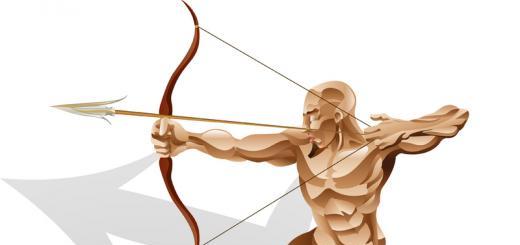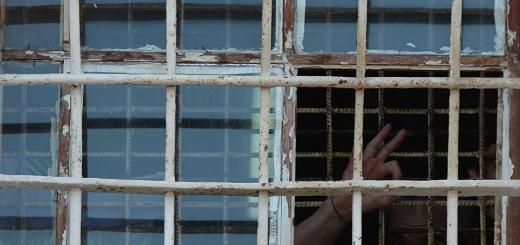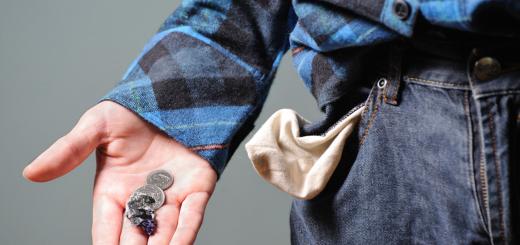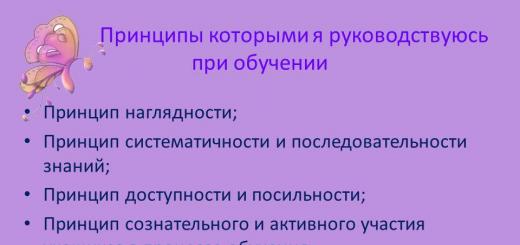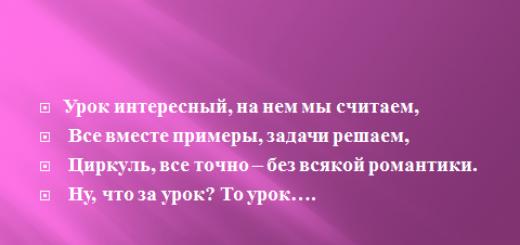Health-saving technologies in elementary school lessons
Novoselova Galina Nikolaevna
S. Staraya Rudka
2015

“Whoever does not value his own health cares less about other people.”
V.M. Shepel

Introduction
- Theoretical substantiation of the problem of development of health-saving technologies.
- Methodological basis for the development of health-saving technologies.
- Methodological system for the formation of health-saving technologies for primary schoolchildren.
Conclusion
Literature

- provide the student with the opportunity to maintain health during the period of study at school, develop the necessary knowledge, skills, and abilities, teach him to use the acquired knowledge in everyday life.

- Show the importance of health-saving technology in improving the health and quality of life of children in the process of educational activities.

- Develop activities that reduce the risk of illness and injury associated with the social aspects of the lives of primary school students;
- Promotion of healthy lifestyles;
- Help each child realize their abilities, create conditions for their development;
- Contribute to the preservation and strengthening of the child’s health, i.e. implement a person-centered approach to training and education.

- The principle “Do no harm!”
- The principle of consciousness and activity
- The principle of continuity of the health-saving process
- The principle of systematicity and consistency
- The principle of accessibility and individualization
- The principle of comprehensive and harmonious personal development
- Systematic alternation of loads and rest
- Age adequacy of the health-saving process

- Volume of teaching load – number of lessons and their duration, including time spent on homework;
- Active-motor activities: dynamic breaks, physical education lessons, sports events, etc.
- Compliance with hygienic and psychological-pedagogical conditions for conducting a lesson.

- Protective and preventive (personal hygiene and hygiene of education)
- Compensatory-neutralizing (physical training; recreational, finger, breathing and other gymnastics, physical therapy; massage, self-massage; psycho-gymnastics, trainings)
- Stimulating (elements of hardening, physical activity, psychotherapy, herbal medicine, etc.)
- Information and educational (letters addressed to parents, students, teachers)


- Physical health is a state in which a person has harmony of physiological processes and maximum adaptation to various environmental factors. Hence, physical activity is a natural need for a healthy, developing body to move.

TRAFFIC LIGHT GAME:
The teacher shows the traffic lights one by one, everyone stands at the red light, sits down at the yellow light, and walks on the spot at the green light (all team members participate; whoever makes a mistake is eliminated from the game, the team whose participant remains wins).
I think you understand that you need to obey without arguing
Traffic light instructions.
You need to follow the traffic rules without objection.
You must clearly distinguish the colors green, yellow, red!

Gymnastics for the eyes
1. Blink often, often,
Then close your eyes,
Count to five like this
And start all over again!
2. We hold our hand in front of us,
Without shaking my head,
Move your finger up and down,
Right and left and - follow!

- Mental health is a person’s ability to adequately respond to external and internal stimuli, the ability to balance oneself with the environment. Hence, mental activity is the need of a normally developing child to understand the surrounding life: nature, human relationships; the child's need to know himself.

Psychological mood for the lesson
Let's put aside experiences and failures.
Without giving up, let's get down to business, my friend,
And in this lesson we again
We'll all work hard.

Relaxation « Quiet Lake"
“Sit in a comfortable position. Relax. Now close your eyes and listen to me.
Imagine a wonderful sunny morning. You are near a quiet, beautiful lake. All you can hear is your breathing and the splash of water.
The sun is shining brightly and it makes you feel better and better. You feel the sun's rays warming you. You hear the chirping of birds and the chirping of a grasshopper. You are absolutely calm. The sun is shining, the air is clean and transparent. You feel the warmth of the sun with your whole body. You are calm and still, like this quiet morning.
You feel calm and happy, you are too lazy to move. Every cell of your body enjoys peace and the warmth of the sun. You are resting…
Now let's open our eyes. We are back at school, we are well rested, we are in a cheerful mood, and pleasant feelings will not leave us throughout the day."


- Social health is a measure of social activity, the active attitude of a human individual to the world. Hence, social activity is manifested in behavior aimed at maintaining and fulfilling the rules that are mandatory for the student, in an effort to help his peer fulfill these rules.

Game "Four Elements"
The players line up in one line. The driver stands in front of them with the ball in his hands at a distance of 5-6 steps.
As you know, the four elements are water, air, earth, fire. Fish live in water, birds live in the air, animals live on land, but it is impossible to live in fire. The one to whom the ball is thrown with the words of one of the elements must catch it and immediately throwing it back to the presenter, name the animal that lives in this element. If you answered correctly, take a step forward. The winner is the one who is the first to line up with the driver.

Pedagogy of cooperation
Good afternoon - animals and birds. Good afternoon - cheerful faces. Good afternoon - guests and children. Good afternoon - to everything in the world.
Now you say kind words to each other that begin with the sound “ IN ». (Polite, attentive, cheerful, well-mannered, generous.)

- Moral health is a complex of characteristics of the motivational and need-information sphere of life, the basis of which is determined by the system of values, attitudes and motives of behavior of an individual in society.

Exercise “Yes or not?”
The players stand in a circle and join hands with the leader in the center. He explains the task: if they agree with the statement, they raise their hands up and shout “Yes,” if they disagree, they lower their hands and shout “No!”
- Are there fireflies in the field? Are there any fish in the sea? Does a calf have wings? Does a piglet have a beak? Does the mountain have a ridge? Are there doors to the hole? Does a rooster have a tail? Does the violin have a key? Does the verse rhyme? Does it have errors?
- Are there fireflies in the field?
- Are there any fish in the sea?
- Does a calf have wings?
- Does a piglet have a beak?
- Does the mountain have a ridge?
- Are there doors to the hole?
- Does a rooster have a tail?
- Does the violin have a key?
- Does the verse rhyme?
- Does it have errors?


- Elements of movements Physical exercises Dance exercises Physical education minutes and active breaks Emotional releases and “moments of peace” Gymnastics Physical therapy Outdoor games Massage, self-massage Psycho-gymnastics
- Elements of movement
- Physical exercise
- Dance exercises
- Physical education and active breaks
- Emotional releases and “moments of peace”
- Gymnastics
- Physiotherapy
- Outdoor games
- Massage, self-massage
- Psycho-gymnastics

- exercises to develop posture,
- strengthening vision,
- strengthening arm muscles,
- spine rest,
- leg exercises,
- exercises on the carpet,
- relaxation exercises for facial expressions,
- stretching,
- massage of the chest, face, arms, legs,
- psychogymnastics,
- exercises aimed at developing rational breathing.

- Water procedures
- Phytotherapy
- Aromatherapy
- Vitamin therapy

- Compliance with sanitary and hygienic requirements
- Personal and public hygiene (body cleanliness. Cleanliness of work areas, air, etc.)
- Ventilation and wet cleaning of premises
- Maintaining a general daily routine
- Teaching children basic healthy lifestyle techniques

Literature
Certification of primary school teachers. Methodological recommendations / Author-comp. G.F. Suvorova, O.V. Tarakanova; Under the general editorship of L.Ya. Oliferenko. – 3rd ed. – M.: Airis-press, 2005. – 80 p.- (Certification of education workers).
Conversations with the teacher. Teaching methods: First grade of a four-year primary school / Ed. L.E. Zhurova. – 2nd ed., revised. And additional – M.: Ventana-Graf, 2001. – 384 p.: ill.
Vasilyeva N.Yu. Integrated lessons: 1st grade. – M.: VAKO, 2008.- 208 p.- (Teacher’s Workshop).
Sukhin I.G. Entertaining materials: Primary school. - M.: VAKO, 2004. - 240 p. – (Teacher’s Workshop).
- Certification of primary school teachers. Methodological recommendations / Author-comp. G.F. Suvorova, O.V. Tarakanova; Under the general editorship of L.Ya. Oliferenko. – 3rd ed. – M.: Airis-press, 2005. – 80 p.- (Certification of education workers). Conversations with the teacher. Teaching methods: First grade of a four-year primary school / Ed. L.E. Zhurova. – 2nd ed., revised. And additional – M.: Ventana-Graf, 2001. – 384 p.: ill. Vasilyeva N.Yu. Integrated lessons: 1st grade. – M.: VAKO, 2008.- 208 p.- (Teacher’s Workshop). Sukhin I.G. Entertaining materials: Primary school. - M.: VAKO, 2004. - 240 p. – (Teacher’s Workshop).

Literature
Glizerina L.I. Bits of experience. Methodological manual for primary school teachers. Editorial board of the magazine “Mari El Teacher” - Yoshkar-Ola, 1996.
Efimov V.F. Mathematics in plots. A manual for primary school teachers // Series “School for All” - M.: New School, 2002.-272 p.
Kovalenko V.I. Health-saving technologies: schoolchildren and computer: grades 1-4. - M.: VAKO, 2007- 304 p. - (Pedagogy. Psychology. Management.).
Nikishina I.V. Innovative activities of a modern teacher in the system of school-wide methodological work. – Volgograd: Teacher, 2007.- 93 p.
Titkova T.V., Gorbacheva E.Z., Tsyganok L.V. Open lessons: grades 1-4. – M.: VAKO, 2010. – 288 p. – (Teacher’s Workshop).
- Glizerina L.I. Bits of experience. Methodological manual for primary school teachers. Editorial board of the magazine “Mari El Teacher” - Yoshkar-Ola, 1996. Efimov V.F. Mathematics in plots. A manual for primary school teachers // Series “School for All” - M.: New School, 2002.-272 p. Kovalenko V.I. Health-saving technologies: schoolchildren and computer: grades 1-4. - M.: VAKO, 2007- 304 p. - (Pedagogy. Psychology. Management.). Nikishina I.V. Innovative activities of a modern teacher in the system of school-wide methodological work. – Volgograd: Teacher, 2007.- 93 p. Titkova T.V., Gorbacheva E.Z., Tsyganok L.V. Open lessons: grades 1-4. – M.: VAKO, 2010. – 288 p. – (Teacher’s Workshop).

Municipal educational institution "Vozdvizhenskaya secondary school" primary school teacher teaching experience: 8 years “Caring for health is the most important work of a teacher. Their spiritual life, worldview, mental development, strength of knowledge, and self-confidence depend on the vital activity and vigor of children...” A.V.Sukhomlinsky
Morozova
Julia
Evgenievna
Health-saving technologies as a factor in preserving and strengthening the health of primary schoolchildren.
Research conditions
Methodological conditions
Conditions for the formation of personal contribution
Organizational
pedagogical
Study of the works of N.K. Smirnov,
N. P. Abaskalova,
G. K. Zaitseva
- All-Russian pedagogical online conference “Health-saving activities in school in the context of the implementation of the Federal State Educational Standard”
- Webinar “Use of health-saving technologies in the process of teaching and educating schoolchildren”
- Courses “Theory and methods of teaching in primary school in the context of the implementation of the Federal State Educational Standard”
- participation in educational training of primary school teachers,
- attending and conducting open lessons, extracurricular activities,
The relevance of the teacher’s personal contribution to the development of education
Health is the most important factor in the performance and development of a child’s body.
In accordance with the Law of the Russian Federation “On Education,” the health of schoolchildren is one of the priority areas of state policy in the field of education. In modern conditions, the school is called upon to perform not only an educational function, but also to take care of preserving and strengthening the health of children, since everyone goes through school and the problem of preserving and strengthening health must be solved here.
Theoretical justification of personal contribution
Health-saving technologies, as defined by N.K. Smirnova, these are all those psychological and pedagogical technologies, programs, methods that are aimed at developing a culture of health and personal qualities in students, contributing to its preservation and strengthening, the formation of an idea of health as a value, motivation to lead a healthy lifestyle.
the need to preserve the health of schoolchildren
lack of clear work to create a health-preserving space at school
Provision for younger schoolchildren
opportunities to maintain health while studying at school,
formation of necessary knowledge and skills in
healthy lifestyle.
Find out the importance of health-saving technologies in
improving the health and quality of life of students
in the process of educational activities.
Help maintain and improve health
younger schoolchildren, creating a favorable environment
in class.
Summarize health-saving conditions
educational process.
Leading pedagogical idea
Formation of motivation among students and teachers
and parents to ensure that they from the very
early childhood was valued, cherished and strengthened
their health, strived to become healthier
and developed not only personally, intellectually,
spiritually, but also physically.
Types of health-saving technologiesOrganizational and pedagogical technologies
Psychological and pedagogical technologies
Educational technologies
FTA is a set of forms and techniques for organizing the educational process without harming the health of the child and the teacher.
(N.K. Smirnov)
Activity aspect
Means of health-saving technologies in the educational process
- Physical education minutes
- Minutes of relaxation
- Breathing exercises
- Gymnastics for the eyes
- Finger gymnastics
- Massage of active points
- Alternation of activities in the lesson
Analysis of the health status, physical development and physical fitness of children and the health-preserving environment of the institution
Organization
Establishing contacts with social partners of institutions on issues
Mastering by teachers of the institution methods and techniques
Introduction of various forms of work to preserve and promote health in the educational process
Work on
For students
- successfully adapt
- contribute to the formation
in educational and social
space,
health needs
lifestyle.
Range of personal contribution to the development of education
- reduce psycho-emotional
- enhance cognitive
- improve psychological
- prevent the formation
student tension,
student activity,
climate in the team,
disadaptation and condition
overwork
The use of health-saving technologies in classroom and extracurricular activities has allowed
The effectiveness of professional teaching activities
Number of school days missed due to illness
Number of unsick children
Broadcastability of practical
professional achievements
This work may be of interest to both primary school teachers and middle-level subject teachers, as well as young teachers.
The achievements of this work will be announced at the school’s pedagogical council, and also disseminated among the teaching community through the websites dnevnik.ru, nsportal.ru, prosholu.ru, multiurok.ru
Literature
1. Federal Law "On Education in the Russian Federation" dated December 29, 2012 N 273-FZ
2. Abramova I.V. Bochkareva T.I. Health-saving technologies in elementary school. - S.: SIPCRO, 2004
3. Gladysheva O.V. System model of a health-saving school / O. Gladysheva // School Director. - 2009
4. Kovalko V.I. Health-saving technologies in elementary school. 1-4 grades. M.:
"VAKO", 2004
5. Smirnov N.K. Health-saving educational technologies in the work of teachers and schools. – M.: ARKTI, 2003.
6. Sovetova E.V. Health technology at school / E.V. Sovetova. – Rostov n/d: Phoenix, 2006.
Thank you for your attention!“The health status of the younger generation is the most important indicator of the well-being of society and the state, not only reflecting the current situation, but also giving a forecast for the future.”
Slide 2
“Taking care of health is the most important job of a teacher. Their spiritual life, worldview, mental development, strength of knowledge, self-confidence depend on the vital activity and vigor of children...”
V.A. Sukhomlinsky.
Slide 3
The student’s health is normal if:
- in physical terms - health allows him to cope with the educational load, the child knows how to overcome fatigue;
- socially, he is sociable and sociable;
- emotionally – the child is balanced, capable of surprise and admiration;
- Intellectually, the student demonstrates good mental abilities, observation, imagination, and self-learning;
- morally, he recognizes basic human values.
Slide 4
Health-saving educational technologies
Health-saving educational technologies are a systematic approach to training and education, built on the desire of the teacher not to harm the health of students.
Slide 5
Principles of health conservation:
- "Do no harm!".
- Priority is given to the health of teachers and students.
- Continuity and succession.
- Subject-subjective relationships.
- Correspondence of the content and organization of training to the age characteristics of those with long hair.
- An integrated, interdisciplinary approach.
- Success breeds success.
- Activity.
- Responsibility for your health.
Slide 6
Criteria for health conservation and levels of hygienic rationality of the lesson
Slide 7
Average duration and frequency of alternation of activities.
Slide 8
Slide 9
Slide 10
- Availability, place, content and duration of healthy moments in the lesson
- Physical training sessions, dynamic breaks, eye gymnastics, massage of active points
Slide 11
Performance during the school day, grades 1-6
Slide 12
Performance during the school day, grades 7-11
Slide 13
Efficiency during the working week, grades 1-6
Slide 14
Efficiency during the working week, grades 7-11
Slide 15
Physical education and health work at school
Slide 16
Requirements for conducting physical education sessions
- Complexes are selected depending on the type of lesson and its content.
- Exercises should be varied, since monotony reduces interest in them, and therefore their effectiveness.
- Physical training sessions should be carried out at the initial stage of fatigue; performing exercises with severe fatigue does not give the desired result.
- Preference should be given to exercises for tired muscle groups.
- It is important to ensure a positive emotional mood.
Slide 17
Types of physical education minutes
- Exercises to relieve general or local fatigue.
- Exercises for the hands.
- Gymnastics for the eyes.
- Gymnastics for hearing.
- Posture correcting exercises.
- Breathing exercises.
Slide 18
Literature
1. Kovalko V.I. “Health-saving technologies at school. 1-4 grades.", Moscow, Vako Publishing House, 2005.
2. Smirnov N.K. “Health-saving educational technologies in a modern school.”, Moscow, APK and PRO Publishing House, 2002.
3. Sovetova E.V. “Effective educational technologies.”, Rostov n/D, Phoenix Publishing House, 2007.
View all slides
To use presentation previews, create a Google account and log in to it: https://accounts.google.com
Slide captions:
Free Powerpoint Templates Health-saving technologies in the implementation of Federal State Educational Standard 2 in primary school Completed by: primary school teacher MBOU "Central Educational Center No. 40 named after Dementyev" Tula Zaitseva Galina Ivanovna
Free Powerpoint Templates “Caring for health is the most important job of a teacher. Their spiritual life, worldview, mental development, strength of knowledge and faith in their own strength depend on the life activity of children...” V.A. Sukhomlinsky
Free Powerpoint Templates The Convention on the Rights of the Child emphasizes that modern education should become health-saving. The Law “On Education” makes the preservation and strengthening of children’s health a priority. Health preservation cannot act as the main and only goal of the educational process, but only as a condition, one of the tasks of achieving the main goal.
Free Powerpoint Templates Health-saving educational technologies in the broad sense of the word should be understood as all those technologies, the use of which in the educational process benefits the health of students.
Hygienic conditions in the classroom (office): cleanliness, temperature and freshness of air, rational lighting of the classroom and blackboard, presence/absence of monotonous, unpleasant stimuli, etc. It should be noted that the fatigue of schoolchildren and the risk of allergic disorders depend to a large extent on compliance with these simple conditions.
The number of types of learning activities used by the teacher: questioning students, writing, reading, listening, telling stories, looking at visual aids, answering questions, solving examples, problems, practical exercises, etc. The norm is 4-7 types per lesson. The monotony of the lesson contributes to the fatigue of schoolchildren. At the same time, you need to remember that frequent changes from one activity to another require additional adaptation efforts from students. This also contributes to increased fatigue.
Preserving the health of students is facilitated by the individual work of the teacher with students at different stages of the lesson. Working with gifted children according to an individual program.
At “holiday lessons”, each child is involved in active rotating activities. The feeling of importance of each person solves educational and health problems in a complex
active methods (students in the role of teacher, reading by action, group discussion, role-playing game, discussion, seminar, etc.); The use of methods that promote the activation of initiative and creative self-expression of students, which allow them to become subjects of activity. This:
methods of free choice (free conversation, choice of action, its method, choice of interaction methods, freedom of creativity, etc.)
Inclusion of issues related to health and a healthy lifestyle into the content of the lesson. The teacher’s ability to highlight and emphasize health-related issues.
Physical education minutes and physical education breaks are a mandatory part of the lesson. It is necessary to pay attention to their content and duration (the norm is for a 15-20 minute lesson, 1 minute of three light exercises with 3-4 repetitions of each), as well as the emotional climate during the exercises and the desire of schoolchildren to perform them. Physical education minutes and physical education breaks
Under the influence of physical exercise, memory volume increases, attention stability increases, psychomotor processes accelerate, and brain structures are activated.
A good type of relaxation is a song, which provides students with the opportunity to relax, but also serves to develop phonetic, lexical, and grammatical skills. Reduces fatigue and gives great pleasure.
m Work to prevent eye fatigue Look at the star!
Follow the square and guess the letters
Organization of the educational process
Involving parents in project activities
In order to prevent colds, we play outdoor games every day, often go on excursions, and grow phytoncides.
Free Powerpoint Templates Golden rules of psychological comfort in the classroom Do not try to see only negative motives behind every negative action of a student. Careful preparation for the lesson, even the slightest incompetence in teaching your subject is not allowed. Schoolchildren tend to be more willing to follow teachers’ orders with an indirect method of influence.
Thank you for your attention
Tabakaeva Elena Leonidovna, primary school teacher, Municipal Budgetary Educational Institution “Elementary School - Kindergarten No. 11”, Zima
Master class “Health-saving technologies in primary schools”
according to Federal State Educational Standards, their types and implementation"

Goal: broadcast the experience of using health-saving technologies in elementary schools according to the Federal State Educational Standard.
1) Introduce teachers to a variety of methods and techniques that have a positive effect on the health of students.
2) Show the practical significance of using health-saving methods and techniques in educational activities.
3) Convince of the advisability of using elements of health-saving technologies in practical activities.
Equipment: computer, projector, electronic presentation, capsules with orange essential oil, leaflets “The influence of essential oils on human energy”, markers, sheets of paper, booklets with psychological exercises, pictures - supports, an umbrella with postcards, a song, sound accompaniment for exercises.
Methods of working with the audience: heuristic conversation, practical exercises.
Progress of the master class:
- Organizing time.
So, with a great mood and positive emotions, we begin the master class
Hello again, dear colleagues!
And we will begin with the statements of great people.
SLIDE with sayings
Be kind if you want;
Be wise if you can;
But you should always be healthy.
Confucius
“When there is no health, wisdom is silent,
art cannot flourish, forces do not play,
wealth is useless and reason is powerless.”
(Herodotus)
What are these statements about?
How do you understand them?
Are they relevant today?
2.Emotional mood.
2.1. To lift my spirits and relieve stress, I use aromatherapy.
I chose the scent of orange, which helps to warm up, forget about the winter cold and troubles, tones the nervous system, relieves depression, and increases performance.
2.2. Exercise “Tender hands - kind look - pleasant smile”
Participants are asked to place their hands on top of the hands of the neighbor sitting to the left, look into his eyes and smile. And so on in a circle.
- Justification of the problem.
Focus group. I propose to you to refute the commutative law of addition. Do you remember him? Try to create a formula where changing the places of the terms will change everything dramatically and justify your decision.
(divide teachers into 2 groups of 3-4 people, A-4 sheets of paper and pens on the table)
(Formula of life: Life = health + family + work, study + friends.) SLIDE
If we put health in some other place, then not only the amount of “life” will change, its quality will also change. This amount can be equal to 30, 75, or maybe 167 years (the lifespan of one of the Tibetan monks).
CONCLUSION - Without health it is very difficult to achieve anything, therefore it is one of the main life values of a person.
If you came to my master class today, then the problem of preserving the health of schoolchildren is relevant to you.
Today, medical statistics indicate a sharp deterioration in the health of children. Every third first-grader has some kind of disease or disability.
The most common problem is visual impairment.
Children spend more and more time in front of computer and TV screens, do not know the simplest rules of visual hygiene, write and read in the wrong lighting - all this leads to disturbances in the functioning of the eyes. The second problem is said to be poor posture.
Their number increases by the end of school from 1.9% to 16.8%. Modern schoolchildren move little, as a result of which the muscular system does not develop, and their posture becomes distorted.
Another alarming indicator is the increase in neuropsychiatric disorders. They are observed in 5.6% of first-graders and increase to 16.4% in graduates.
Issues of health preservation in federal documents:
The relevance of the topic we are considering is also noted in state laws that regulate educational activities today.
First of all, this is the law “On Education of the Russian Federation” 273-FZ,
which notes what the protection of the health of students includes, what conditions an educational organization should create in its activities,
The importance of their use is also noted in the second document on which the modern education system is based - in the federal state educational standard.
It takes into account the educational needs of all students, including children with disabilities. According to the Federal State Educational Standard, awareness of health as a value and instilling the skills of caring for it is one of the leading guidelines.
- A healthy student is a successful student
Only a healthy person is able to acquire knowledge and assimilate new material. In order to form this quality in children, health-saving technologies are used in primary school, which are defined as a system of measures to strengthen and preserve the health of children, which takes into account the main characteristics of the educational environment and the child’s living conditions that affect the state of health.
Let's consider what is needed to implement health-saving technologies in primary schools. BUT help me with this, dear colleagues!
4.1. Work in pairs. Creating a cluster. (Hand out sheets, glue, support pictures)
I propose to create a cluster and answer the question - What has a positive impact on the child’s health during the lesson?
And supporting pictures will help you formulate the factors.
CONCLUSION - Working in this direction, I came to the conclusion that the following factors have a positive effect on the health of children:
— physical activity
— psychological health of the student
- creative nature of the learning process
— use of the healing power of nature
— use of technologies that have a health-saving resource
- Various types of health-saving technologies in primary schools can be combined into three blocks:
aimed at compliance with hygienic requirements;
organizing rational physical activity;
other psychological and pedagogical technologies.
First block: ensuring hygienically optimal conditions
First of all, the classroom must have a comfortable temperature and a sufficient level of lighting. All these requirements are contained in SanPiN standards.
Secondly, children should sit comfortably, maintaining correct posture, and periodically change their position, relieving static tension.
To do this, I usually use physical exercises, finger exercises, breathing exercises, and eye exercises. Such healthy moments, regularly included in the lesson, have a good effect. SLIDE
Thirdly, the lesson should use several types of activities. This means there should be no long monotonous work, so it is recommended to find the optimal combination.
Fourthly, children in the classroom can gain knowledge in various ways. Practical methods should be included in the lesson.
Fifthly, the psychological climate is very important for maintaining performance. And this: a comfortable atmosphere, goodwill in the relationship between teacher and students, and a focus on cooperation.
A smile and humor help a teacher with this.
Including a small joke, a saying, a funny illustration or a moment of music into the lesson allows you to quickly and easily relieve stress from tedious monotonous activities, acting as an emotional release.
The second block: organizing learning and physical activity marks four important points in the construction of a lesson that includes health-saving technologies in elementary school.
Point one: interesting means not tiring! (on slide)
— The teacher prevents children from becoming tired of the educational process.
Second moment: I see, I hear, I try! (on slide)
— Uses different options for presenting material to make learning easier for all children.
Point three: taking into account the performance zone. (on slide)
— Taking into account the work capacity zones, draws up a schedule,
Point four: distribution of intensity of mental load. (on slide)
Supports optimal student performance.
Third block: psychological and pedagogical health-saving technologies
Includes the use of elements in the lesson that relieve emotional stress:
gaming technologies;
educational interactive programs;
original assignments and tasks;
introduction to lesson digressions.
Creating a favorable psychological climate in the classroom:
friendly communication style; exciting conversation;
interest in every opinion;
tactful remark and calm reaction to mistakes;
stimulation for independent activity;
subtle humor.
I am sure that every teacher can really do a lot in his lesson to preserve and strengthen the health of schoolchildren.
And let’s not forget that at school it is necessary to protect the health of not only children, but also the teacher. After all, as they say, “an unhealthy teacher cannot have healthy students.” But the success, health and mood of the students depend on the health, mood, and emotions with which the teacher enters the classroom.
Therefore, today I offer you a health lesson for you and me.
And the methods and techniques that we will use today ourselves can be successfully included in any lessons for students. We all dream of having good health.
- Practical part.
- Acquiring practical skills to get rid of negative emotions.
An important condition for preserving and strengthening a teacher’s mental health is his ability to “relieve” tension in a timely manner.
Energy exercises—- help get rid of all kinds of “energy debris”, preventing its accumulation. I use energy exercises that are suitable for primary school children.
After such energetic moments, children become noticeably more cheerful and cheerful, lethargy and fatigue disappear.
- Clap your hands in pairs.
- Standing, we shook our hands, threw off negative feelings, looked out the window - what good weather! They smiled at each other and sat down.
- They rubbed their palms together, made a ball, threw it away, and shook off the dust from their palms.
- We raised our hands with open palms up, took the warmth from the sun, covered our faces with our hands (eyes closed), became energetic and strong.
- They stretched, their bones cracked, they exhaled sharply Phew! What a day!
- Snowfall. We catch imaginary snowflakes, maybe on ourselves, on each other. They gave a “bouquet” to a neighbor.
- They saw a flying saucer, blinked in surprise, and shook their heads. Wow!
- They put their hands to their hearts, opened them, blew on their palms, and gave warmth and love to the whole world.
- We show with gestures: many gifts! Hooray! Everything is fine! Totally skinny! This can't be true! Etc.
- How to relieve stress laughter and tears.
American psychologist Don Powell advises: “Find a reason to laugh a little every day.”
Remember, he who laughs lives long
Exercise “A minute of mischief”
Leading on signal (blow the tambourine, whistle, clap your hands) offers children play pranks: everyone does what he wants - jumps, runs, etc. a repeat signal from the presenter after 1-3 minutes announces the end of the pranks
- The voice is a precious gift of nature.
The teaching profession requires skillful use of your voice.
Screaming is a natural, natural and widespread way to relieve nervous tension.
But as a teacher, the energy of screaming can and should be directed in a positive direction.
For example, it can be transformed into the energy of singing sound.
An interesting and promising area that is used for therapeutic and recreational purposes is music therapy.
I often use onomatopoeia exercises in my lessons. Psychologists recommend singing vowel sounds, and it turns out that
"Eee-ee-ee" – trains the throat
The sound "mmmm" relieves stress and allows you to completely relax.
The sound "a-a-a" immediately causes relaxation
Sound "eeee" - the most stimulating sound, sonic caffeine. 3-5 minutes of pronouncing this sound stimulates the brain, increases the activity of the body, improves mood, feelings of well-being
The "o-o-o" sound - heals the throat, a means of instantly adjusting the body.
The sound "y-y-y"
– heals ears, improves breathing;
The sound "uh-uh"
– improves brain function.
Participants tone on a note that is comfortable for them. ( This world was not invented by us...)
Conclusion - In a short time we relieved stress, relaxed, treated our throat, ears, improved breathing, brain function, and improved our mood.
- Exercise “Congratulations”.
If you want to double, increase the feeling of joy, also write on paper. Please come to me and choose a card for yourself. (participants reach up for the postcard as high as possible. The postcards are hung on an umbrella and rise depending on the person’s height).
— You stood on your tiptoes, stretched, stretched again, thereby forcing your back muscles to work, “stretching” your spine.
This technique allows you to prevent poor posture and the occurrence of scoliosis.
- Now look at the postcard. Write a wish to each other on the upcoming Mother's Day
I think you will do it with pleasure.
Another request - write your wish within 1 minute.
— I think that, among other things, you wished everyone and yourself health.
- Exercise - reflection “Depict an emotion.”
I think we didn’t spend time with you in vain and each of you experienced different emotions. I suggest depicting the emotion inherent in you at the moment. And the sound will help you with this. I turn on the sound of the emotion, if it is yours, you get up and portray it.
How nice it is to see you in a good mood. Success at work improves your mood!
- Thank you everyone for your work! Wish:
I wish you never to forget about your health, take care of it and take care of yourself! If you are healthy, you will be happy!
